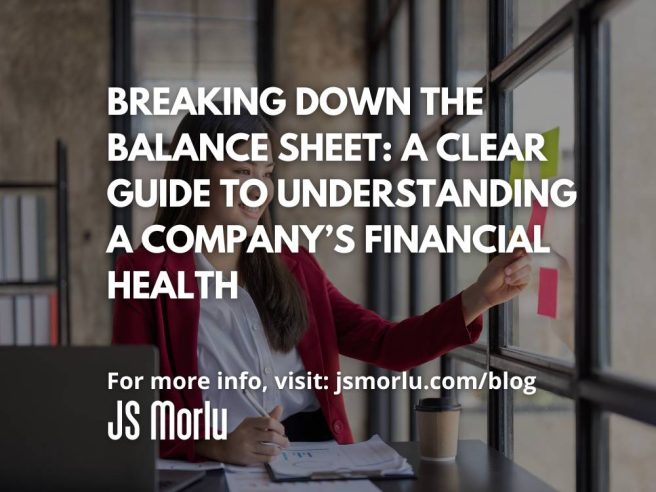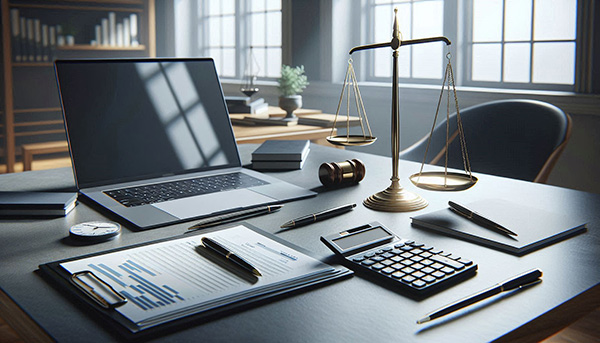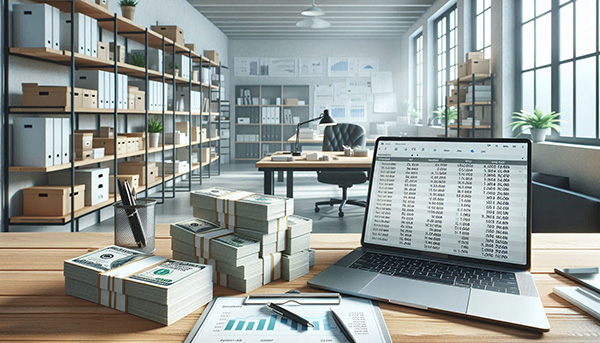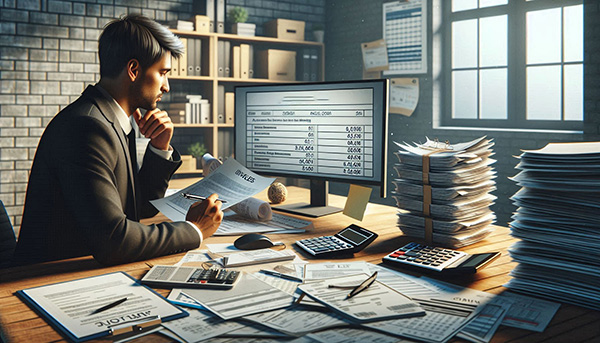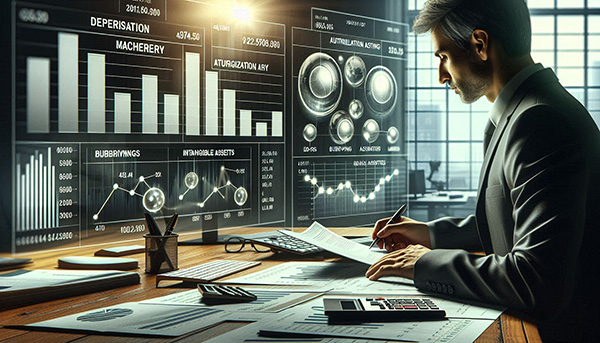By: John S. Morlu II, CPA, CMA, CGFM
In the world of business, few documents hold as much power as the balance sheet. This essential financial statement provides a clear, in-depth snapshot of a company’s financial health at any given moment. It’s much more than a collection of numbers—it’s an x-ray that reveals the true condition of a business, whether it’s thriving, stable, or struggling. For investors, lenders, and potential buyers, the balance sheet tells a crucial story that can make or break their decision to engage with a company.
Understanding the balance sheet means understanding the pulse of a business. It uncovers the company’s assets, liabilities, and equity—showing how well it manages its resources, whether it’s making sound financial decisions, and if it’s in a position to grow. But what do all these figures mean? And how do they impact a company’s ability to attract investors or secure loans?
In this article, we will break down the core elements of the balance sheet, explain the critical distinctions between short-term and long-term assets and liabilities, and demystify concepts like depreciation, amortization, and borrowings that directly impact a company’s financial outlook. You’ll discover how lenders assess a company’s creditworthiness, and how investors gauge a business’s potential for growth based on its balance sheet. By the end, you’ll not only know how to read a balance sheet like a pro—you’ll also be able to use this knowledge to make smarter financial decisions, whether you’re a business owner, lender, or investor looking to understand a company’s true value.
What Is a Balance Sheet?
A balance sheet is one of the most important financial statements a business produces. Unlike the income statement, which shows how much money a company made or lost during a specific period, the balance sheet shows what a company owns, what it owes, and what’s left for its owners at a particular moment in time. In other words, it’s a financial snapshot.
A balance sheet is broken into three main sections:
1. Assets – What the company owns.
2. Liabilities – What the company owes.
3. Equity – What’s left for the owners after debts are paid.
To keep things simple, imagine the balance sheet as a scale: on one side, you have the company’s assets, and on the other side, you have its liabilities and equity. For the balance sheet to “balance,” the total value of the assets must equal the combined total of the liabilities and equity. This is known as the accounting equation:
Assets = Liabilities + Equity
Let’s now dive deeper into each section and discover how they work together to provide a complete picture of a company’s financial health.
Section 1: Assets – The Building Blocks of a Business
Assets are the things a company owns that can provide future economic benefits. They are divided into two major categories: short-term assets (also known as current assets) and long-term assets (or non-current assets).
1. Short-Term (Current) Assets
Short-term assets are those that can be converted into cash or used up within a year. Examples include:
- Cash and cash equivalents: The money the company has readily available in bank accounts or other liquid investments.
- Accounts receivable: The money that customers owe to the company. If a company sold goods or services on credit, this is the amount that hasn’t been paid yet.
- Inventory: This refers to products the company has in stock but has not yet sold.
- Prepaid expenses: Payments made for expenses in advance, such as insurance premiums or rent.
Short-term assets are essential because they show whether a company has enough resources to meet its short-term obligations. If a company can’t turn these assets into cash quickly enough, it may have trouble paying its bills, no matter how profitable it seems on paper.
Example:
Imagine a small business that makes furniture. It might have $50,000 in cash, $30,000 in accounts receivable (money owed by customers), and $100,000 worth of unsold furniture in its inventory. These are all short-term assets because they can be turned into cash relatively quickly (within a year).
2. Long-Term (Non-Current) Assets
Long-term assets are those that a company expects to use for more than a year. These include:
- Property, plant, and equipment (PP&E): These are physical assets like buildings, machinery, and vehicles that are critical to the company’s operations.
- Intangible assets: Non-physical assets such as patents, trademarks, and goodwill. Goodwill represents the value of a company’s reputation, customer relationships, and brand strength.
- Investments: Stocks, bonds, or other securities the company owns and plans to hold for more than a year.
Long-term assets are essential for a company’s long-term success. They show the resources the company has to continue operating and expanding over time. A company with valuable long-term assets is often seen as having more stability and future potential.
Example:
Take a tech company that owns a building worth $500,000, computers worth $200,000, and software patents valued at $100,000. These are long-term assets because they will continue generating value for the company for years to come.
Section 2: Liabilities – The Company’s Debts and Obligations
Liabilities are the debts and obligations that a company owes to others. These too are divided into two categories: short-term liabilities and long-term liabilities.
1. Short-Term (Current) Liabilities
Short-term liabilities are debts the company must pay within a year. They include:
- Accounts payable: Money the company owes to suppliers for products or services it has already received.
- Short-term loans: Loans or other financial obligations due within the next 12 months.
- Accrued expenses: Wages, taxes, or other expenses the company owes but hasn’t yet paid.
Short-term liabilities are important because they represent the immediate obligations of the company. Lenders and investors want to make sure that a company can cover its short-term liabilities with its short-term assets.
Example:
Let’s say a clothing manufacturer owes $20,000 to its fabric suppliers, has a $50,000 short-term loan, and needs to pay $15,000 in employee wages next month. These are all short-term liabilities because they need to be settled within the next year.
2. Long-Term (Non-Current) Liabilities
Long-term liabilities are debts that don’t need to be paid for more than a year. These include:
- Long-term loans and bonds: These are borrowings that are not due for several years.
- Deferred tax liabilities: These are taxes the company will owe in the future but hasn’t yet paid.
- Lease obligations: Long-term leasing commitments for things like office space or equipment.
Long-term liabilities are crucial because they show the company’s long-term financial commitments. A company with too much long-term debt may struggle to grow or make future investments.
Example:
A hospital might have a $1 million loan that it’s repaying over 10 years, which is a long-term liability.
Section 3: Equity – What’s Left for the Owners
After paying off all liabilities, whatever remains belongs to the company’s owners. This is called equity. Equity can come from two main sources:
- Common stock: This represents the ownership shares the company has sold to investors.
- Retained earnings: These are profits the company has earned but has not distributed to shareholders as dividends. Instead, the company reinvests these earnings back into the business to fuel growth.
Equity is like the owner’s stake in the company. If a company has more assets than liabilities, equity is positive, and the company is considered valuable. But if liabilities exceed assets, the company’s equity is negative, which could mean it’s in financial trouble.
Example:
If a business has $500,000 in assets and $200,000 in liabilities, the remaining $300,000 is equity. This is the portion of the company’s value that belongs to its shareholders.
Short-Term vs. Long-Term Assets and Liabilities
The difference between short-term and long-term assets and liabilities gives critical insight into a company’s financial situation.
- Short-term assets vs. short-term liabilities: Lenders and investors look closely at whether a company has enough short-term assets (like cash and accounts receivable) to cover its short-term liabilities (like bills and loans). This is called liquidity. A company with strong liquidity can easily pay its short-term debts and continue operating smoothly.
- Long-term assets vs. long-term liabilities: A company’s long-term assets (such as property and equipment) should ideally generate enough income to cover its long-term liabilities (like loans). If a company has too many long-term liabilities compared to its long-term assets, it may have difficulty meeting future financial obligations, which could be a red flag for investors or lenders.
Understanding Depreciation, Amortization, and Borrowings
Depreciation and Amortization
Depreciation and amortization are methods companies use to spread the cost of their long-term assets over time.
- Depreciation is used for physical (tangible) assets like buildings and machinery. Over time, these assets wear out or lose value, and depreciation reflects this. For example, if a company buys a machine for $100,000 and expects to use it for 10 years, it will depreciate by $10,000 each year.
- Amortization is similar but applies to intangible assets like patents or copyrights. A company might buy a patent for $50,000 and amortize it over its 10-year useful life by recognizing $5,000 in amortization each year.
These processes allow companies to spread out the expense of large purchases over several years, which provides a more accurate picture of the company’s financial health.
Borrowings
Borrowing money is common for businesses, whether through loans or issuing bonds. While borrowing provides cash that a company can use to invest in its operations, it also creates liabilities that must be repaid, often with interest.
Borrowings show up on the balance sheet as both short-term and long-term liabilities, depending on when the debt is due. Too much debt can be risky, especially if the company’s earnings aren’t enough to cover the interest payments.
How Lenders Use the Balance Sheet to Determine Creditworthiness
Lenders use the information on a balance sheet to evaluate whether a company is a good candidate for a loan. Here’s how:
- Liquidity: Can the company pay its short-term bills? Lenders want to see that a company has enough short-term assets to cover its short-term liabilities. The current ratio (current assets divided by current liabilities) is a common measure of liquidity. A ratio above 1 means the company has enough short-term assets to pay its short-term debts.
- Leverage: How much debt does the company have compared to its assets? Lenders assess the debt-to-equity ratio (total liabilities divided by equity) to determine how much of the company is financed by debt versus owner’s equity. A high ratio means the company is heavily leveraged, which could be a red flag.
- Asset Quality: What kind of assets does the company have, and how valuable are they? Lenders want to see that the company’s long-term assets are productive and valuable, such as well-maintained equipment or prime real estate.
- Profitability: Even though the balance sheet doesn’t directly show profitability (that’s what the income statement is for), lenders can still use the balance sheet to see trends in retained earnings. Growing retained earnings indicate that the company has been profitable and is reinvesting in its future.
How the Balance Sheet Helps Investors
For investors, the balance sheet reveals whether a company is a good investment or a potential risk. Here’s what they look for:
- Company Value: Equity, especially retained earnings, shows how much value the company has built up for its shareholders. A company with strong equity is often seen as a stable and promising investment.
- Growth Potential: Investors are interested in whether the company has the right mix of assets and liabilities to continue growing. Too much debt could limit growth, while too little investment in long-term assets could mean the company isn’t preparing for the future.
- Financial Health: Investors want to know that the company isn’t just surviving but thriving. A healthy balance sheet, with manageable debt, strong assets, and growing equity, signals that the company is well-positioned for long-term success.
The Balance Sheet as a Tool for Business Owners
For business owners, the balance sheet is a key tool for assessing the financial health of their company. It helps them understand whether they are improving the company’s value or putting it at risk. Owners can use the balance sheet to:
- Evaluate Financial Stability: Is the company balancing its assets and liabilities effectively?
- Plan for Growth: Do they have enough assets to fund future projects? Should they take on more debt, or is it time to pay down existing liabilities?
- Detect Warning Signs: Are they over-leveraged with too much debt? Are short-term liabilities growing faster than short-term assets?
Avoiding Financial Shenanigans
Unfortunately, some business owners might be tempted to manipulate their balance sheets to make the company look better than it is. They might hide profits to save on taxes or inflate assets to attract investors. These financial tricks can wipe out the true book value of a company and lead to serious consequences down the road.
For lenders and investors, it’s crucial to look for red flags like sudden, unexplained changes in asset values or consistently negative retained earnings. These could be signs that the company is engaging in financial shenanigans, which can destroy trust and harm the business in the long run.
Conclusion: A Powerful Tool for Decision-Makers
The balance sheet is a powerful tool that provides key insights into a company’s financial health. Whether you’re a business owner, lender, or investor, understanding how to read and interpret the balance sheet can help you make informed decisions. By breaking down the assets, liabilities, and equity, and understanding how depreciation, amortization, and borrowings impact the financial picture, you can assess the company’s financial stability and future potential.
For lenders, the balance sheet offers a clear view of a company’s creditworthiness. For investors, it reveals the company’s value and growth potential. And for business owners, it helps them track their financial health and make strategic decisions to improve their company’s performance.
In short, the balance sheet isn’t just a list of numbers—it’s a roadmap to understanding a company’s financial strength and guiding the way to smarter business decisions.
John S. Morlu II, CPA, CMA, CGFM, is Zemaraim’s expert in financial and accounting matters, with over 20 years of experience. A recognized authority in small business accounting, he has delivered lectures at major forums across the U.S. and globally, including as a frequent speaker for the State of Virginia’s Small Business Interise Program, where he teaches business owners how to grow and manage their enterprises. With an MBA in Finance from Johns Hopkins and a Bachelor’s in Economics from the University of Virginia, John provides invaluable expertise in Accounting, Financial Management, and Business Strategy, ensuring Zemaraim’s clients receive top-tier insights and guidance. He can be reached at [email protected]
JS Morlu LLC is a top-tier accounting firm based in Woodbridge, Virginia, with a team of highly experienced and qualified CPAs and business advisors. We are dedicated to providing comprehensive accounting, tax, and business advisory services to clients throughout the Washington, D.C. Metro Area and the surrounding regions. With over a decade of experience, we have cultivated a deep understanding of our clients’ needs and aspirations. We recognize that our clients seek more than just value-added accounting services; they seek a trusted partner who can guide them towards achieving their business goals and personal financial well-being.
Talk to us || What our clients says about us

